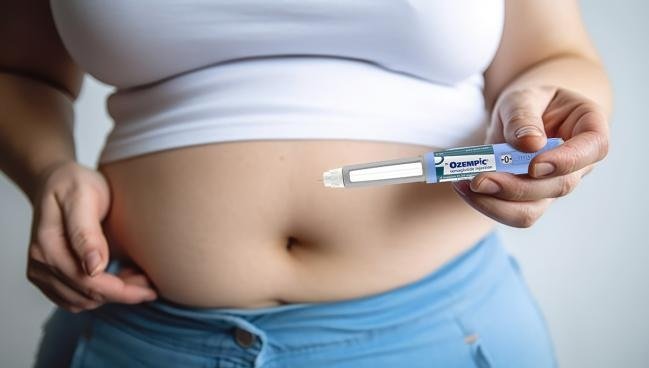Here’s the thing: it’s not either/or. It’s both.
If you’ve started GLP 1 weight loss therapy—like Zepbound or another GLP-1 receptor agonist—you’ve probably heard it a hundred times: “It works best with lifestyle changes.”
At first glance, that might sound like a polite way of saying, “You still have to diet.”
But that’s not really the full picture. This isn’t about turning a prescription into a punishment. It’s about using science-backed tools—like Zepbound—to finally make sustainable habits stick.
Let’s break down how these meds actually work with movement, food, and mindset—not against them.
GLP-1: What’s happening under the hood
GLP-1 stands for glucagon-like peptide-1, a hormone your body releases naturally after eating. Its job? Signal satiety, slow digestion, and help regulate insulin.
When you take a GLP-1 drug, it mimics this hormone—sending powerful “I’m full” messages to your brain while keeping food in your stomach longer. That means:
- Smaller portions feel satisfying
- Hunger pangs are quieter
- Blood sugar stays steadier
But here’s the magic: it gives you a window. A physiological pause where food noise quiets down. That’s your chance to build new habits—because now your biology isn’t actively fighting you.
Food: Eat to support your gut, not fight it
You’ll eat less. That’s a given. But what you eat still matters—especially when your digestion is slower and your appetite cues are changing.
Try this:
- Prioritize protein
Your body still needs fuel, and protein helps maintain muscle mass during weight loss. Think eggs, fish, tofu, lentils, or lean meats. - Go easy on greasy
High-fat meals tend to sit like a brick when you’re on a GLP-1 drug. Cue nausea. Stick to healthy fats in moderation—avocados, nuts, olive oil. - Fiber is your friend
Whole grains, veggies, and fruits help keep digestion moving (yep, constipation’s a common side effect). Bonus: they make meals more satisfying. - Small, slow meals > big ones
Your stomach’s working slower now. Let it. Rushing meals or overeating can backfire—hello, bloating and nausea.
GLP-1 therapy may help you eat less by reducing desire, but your food choices still shape your results—and your comfort.
Movement: You don’t need a bootcamp, but you do need consistency
Let’s kill the “you have to work out to lose weight” myth. No, you don’t. But here’s the nuance: exercise helps you keep the weight off. And more importantly—it helps your body and brain feel better during the process.
GLP 1 weight loss drugs support metabolic improvements, but activity supports everything else: mood, strength, mobility, blood flow, sleep, and even gut health.
Start here:
- Walking after meals? Great for blood sugar and digestion.
- Resistance training? Protects your muscles while you lose fat.
- Dance in your kitchen? Still counts.
You don’t need a perfect routine. You need movement that feels good enough to repeat. That’s the kind that lasts.
Mindset: You’re not “cheating.” You’re choosing support.
GLP-1 therapy isn’t a shortcut—it’s scaffolding. And it works best when you stop seeing weight loss as a battle and start seeing it as behavioral reprogramming with medical backup.
That’s what this is: a window to rewrite the habits, thoughts, and defaults that got tangled up in years of dieting and weight cycling.
So if you feel guilty that a shot is making it easier? Let that go. You’ve probably done the hard part already—repeatedly. Now you get to do it with biology on your side.
Track progress that isn’t just the scale
GLP-1 drugs can lead to impressive weight loss. But that’s not the only win.
Fewer food cravings
Better energy levels
Improved sleep
Stabilized blood sugar
More confidence in your habits
The scale is just one data point. Notice what’s actually changing in your day-to-day. That’s the stuff that matters.
When setbacks happen (because they will)
Miss a workout? Overdid it on pizza night? Scale jumped two pounds after you swore you were “good”?
It doesn’t mean the therapy isn’t working. It means you’re human.
The benefit of GLP 1 weight loss therapy is that it smooths out the extremes. It gives you resilience—the ability to keep going even when motivation dips or old patterns try to sneak in.
You’re not starting from zero anymore. You’re starting from a better baseline.
Final word: The drug helps. The habits keep it going.
GLP 1 weight loss therapy is a breakthrough for a reason. But it’s not meant to carry the full load.
When you pair it with sustainable, doable lifestyle changes—food that nourishes, movement that energizes, routines that anchor—you’re building something solid.
Something long-term.
Something you can keep.
And that’s the real win.
